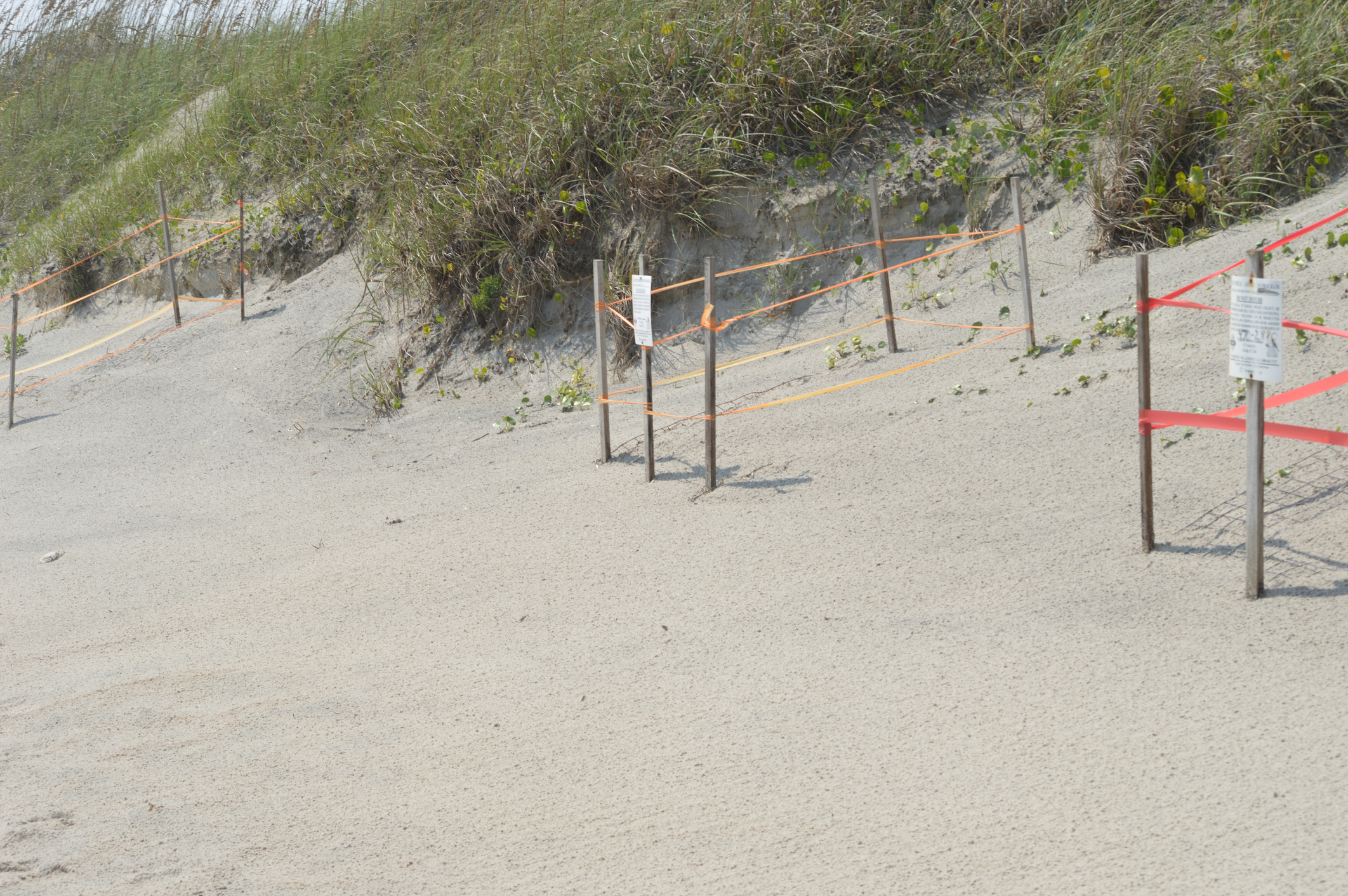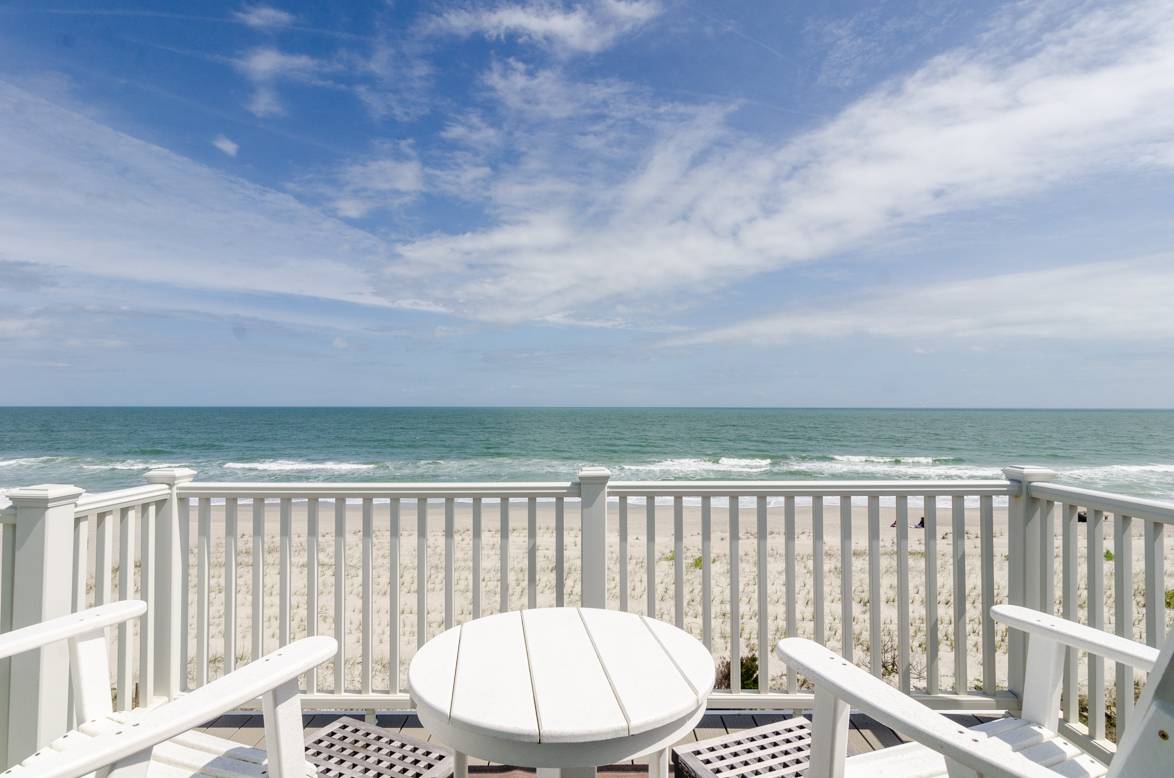Every year, sea turtles flock to the beaches of North Carolina to nest. While it is a great time to see sea turtles on the shore, they are highly protected animals. View our guide on how to enjoy these beautiful turtles and what you can do to help protect them.
Check Out our Wilmington-Area Rentals
What is sea turtle nesting season?
Sea turtle nesting season is when female sea turtles come to the Wilmington area and lay their eggs on the beach. In Coastal Carolina, sea turtle nesting season is from mid-May to September.
Turtles can be as old as years of age when they travel thousands of miles to lay their eggs. The majority of the time, female turtles return to the beach where they hatched to lay their own eggs. They could also return three to five times in a single season!
There are 7 different species of sea turtles in the world and six of them are threatened or engendered in the United States. The most common turtle species to nest on the shore of North Carolina are the Loggerhead and green sea turtle. However, Kemp’s ridley, leatherback, and hawksbill turtles are also known to nest on the Carolina coast, just not as common.
Once the eggs are laid, they are on their own. A typical incubation period for the eggs is approximately 60 days (about 2 months). If the nests are laid early in the season, in the shade of vegetation or a building, or during cool weather, it could take up to 100 days for them to hatch.
What is the best time to watch sea turtles laying eggs?
The best time to watch sea turles laying eggs in North Carolina is at night, when most nesting and hatching happen. So, if you’d like to spot a mother coming ashore and laying eggs or see hundreds of baby turtles scurry down to the sea, head out after dark.
How do Wilmington beaches preserve and protect sea turtles?

All sea turtles are protected by state and federal laws. To help the thousands of turtles that frequent our beaches over the summer, we have hundreds of volunteers that help all summer long to make sure the mother's nest and the babies get back out to sea. One of the local originations that helps protect nests is the Pleasure Island Sea Turtle Project.
Sea turtles are very picky about where they lay their eggs. It is a common practice for female sea turtles to crawl up the beach only to return to the ocean without laying a nest if the site didn’t suit her or if she was scared away. When this happens, it’s called a false crawl.
Sea Turtle Nests are clearly marked with yellow or red tape and with a sign that identifies the area as a sea turtle nesting site. Often, the top of the nest will be covered with fencing to help prevent predators such as raccoons and foxes from digging into the sand and eating the eggs.
Book a Wilmington-Area Vacation Rental
What can you do to help with sea turtle nesting season in NC?
Keep Your Distance If you notice an adult turtle on the beach looking to nest, stay quiet and keep your distance. She might get scared and go back into the ocean without nesting if they spot you. Even when they hatch, the turtles must make it back to the ocean on their own. Do not touch the hatchlings. Also, stay away from the nest area and watch for the nest markers. Keep in mind sea turtles are an endangered species and it is a federal offense to harass them.
Fill any holes in the sand at the beach. If you or someone in your group digs a hole in the sand and doesn’t fill it back up, the turtle can get stuck in the hole. This can prevent the mother turtle from laying her eggs or returning back to the ocean.
Keep the beaches clean Sea turtles may mistake a plastic bag or other things left on the beach for jellyfish. All personal items, equipment, and trash must be removed from the beach at the end of each day these items may trap a sea turtle.
Don't use artificial light Sea Turtles use the moonlight reflecting in the water to get back to the ocean. When you go out at night on the beach, it's best for you to use the moonlight or your natural sight as a flashlight can disorient a turtle. If you are staying in one of our Wilmington-area oceanfront rentals, turn off any outside lights at night. This extra light can direct sea turtle inland and not back toward the ocean.
Stay with us this Hatching Season

Book your summer vacation rental on the North Carolina Coast to experience Sea Turtle Nesting season! Our oceanfront vacation rentals in Wrightsville, Kure, and Carolina Beaches are ready to welcome you to North Carolina this summer!
